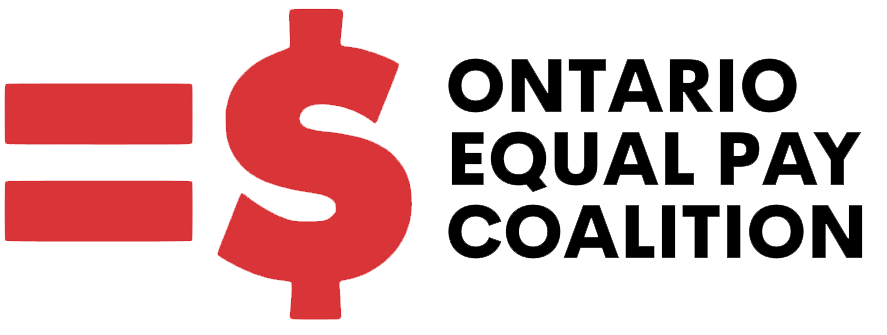On 10 May 2018, the Supreme Court of Canada released its decision in two important pay equity cases. Those decisions deliver 10 key wins for women’s pay equity rights.
One case, brought by CUPE and the FIQ, deals with women’s rights to maintain pay equity (“the Pay Equity Maintenance Appeal”).[1] The second case, brought by the CSN and CSQ, deals with women’s rights to pay equity in female-dominated workplaces like childcare centres and language interpretation (“the Female Workplaces Appeal”).[2]
While both appeals began in Quebec, the Court’s rulings apply across Canada.
In its majority decisions, the Supreme Court of Canada protected 10 key principles that give strong support to pay equity advocacy and rights enforcement. In particular, the Court explicitly:
- recognized how systemic sex discrimination creates and feeds the gender pay gap;
- identified key protections needed to redress systemic discrimination such as:
- access to information from the employer relevant to pay equity;
- pay equity rights for women in female-dominated workplaces, including women in the private sector; and
- full remedies in pay equity maintenance, including retroactive pay; and
- rejected several arguments that governments and employers have repeatedly tried to use to deny women’s pay equity claims.
PRINCIPLES RECOGNIZING SYSTEMIC SEX DISCRIMINATION IN PAY AND WOMEN’S FUNDAMENTAL RIGHT TO PAY EQUITY
1. Pay equity is a fundamental human right.
The decisions map the history of pay equity as a fundamental human right both in Canada and in international human rights instruments. They show that pay equity laws are part of the ongoing efforts to achieve women’s right to equality by ending the systemic sex discrimination that produces and sustains “the deep and persistent gap between women’s and men’s pay”.[3]
2. The gender pay gap is caused by systemic sex discrimination that continues to this day.
The Court strongly emphasizes that women have been, and continue to be underpaid due to systemic sex discrimination that devalues women’s work socially and economically.[4] Women should receive equal pay “because they are equal”. But systemic sex discrimination deprives “women of benefits routinely enjoyed by men – namely, compensation tied to the value of their work. Men receive this compensation as a matter of course”.[5]
3. Occupational segregation and the devaluation of women’s work cause women in female-dominated workplaces to face the deepest sex discrimination.
Systemic sex discrimination in pay “exists in the workforce whether or not there are male comparators in a particular workplace” and “women in workplaces without male comparators may suffer more acutely from the effects of pay inequity precisely because of the absence of men in their workplaces”.[6]
KEY PROTECTIONS NEEDED IN PAY EQUITY LEGISLATION
4. Limiting the pay equity rights of women in female-dominated workplaces is discrimination on the basis of sex.
Governments and employers have argued that treating women in female-dominated workplaces differently has nothing to do with “sex” but is simply a distinction based on “where they work”. The majority of the Court firmly rejected that argument. They recognized that “where women work” – in particular occupational segregation in female-dominated workplaces – is a product of systemic sex discrimination. In addition, all pay equity rights are about ensuring women’s work is valued and compensated the same as men’s work so distinctions in rights are based on sex. The majority emphasized that women in predominantly-female workplaces without male comparators are “the group of women whose pay has, arguable, been most markedly impacted by their gender.”[7]
5. “Leaving wage inequities in place makes women ‘the economy’s ordained shock absorbers’”.[8] This undermines equality because it sustains systemic sex discrimination. Legislation that leaves known discrimination in place can be challenged because it perpetuates systemic sex discrimination.
6. Women have the right to pay equity that is maintained on a continuous and ongoing basis. This means that any pay discrimination that is identified under pay equity maintenance processes must be remedied from the date the wage gap emerged. Women must receive retroactive compensation for any identified pay discrimination that arises between pay equity maintenance reviews. Pay equity “is not an episodic right or an occasional right”. Accordingly, employers are not entitled to any “amnesty” from paying compensation to redress identified discrimination.[9]
7. Women have the right to receive all relevant information regarding pay equity. To deny women the information that is needed to verify, assess and challenge pay equity maintenance is discrimination on the basis of sex.[10] Failure to ensure women have access to this information privileges employers and “reinforces one of the key drivers of pay inequity: the power imbalance between employers and female workers”.[11]
GOVERNMENT AND EMPLOYER ARGUMENTS THAT WERE REJECTED
8. Where pay equity legislation restricts women’s rights in a way that denies equality, women can challenge the legislation as being discriminatory. This means that pay equity legislation that is under-inclusive or otherwise makes distinctions that have a discriminatory impact can be challenged under the Charter.
9. Government cannot pursue law reform strategies that lower the bar on pay equity in order to encourage employer compliance. To do so is inconsistent with substantive equality.[12] This analysis is particularly important as some law reform initiatives have suggested that pay equity obligations should be “streamlined” or limited to encourage employer compliance.[13] In strong language, the Court rejected this argument because it denies women’s right to be free from discrimination:
“Reducing employers’ obligations in the hopes of encouraging compliance subordinates the substantive constitutional entitlement of women to be free from discrimination in compensation to the willingness of employers to comply with the law. It sends the policy message to employers that defiance of the legal obligations under the Act will be rewarded with a watering-down of those obligations. And it sends the message to female workers that it is they who must bear the financial burdens of employer reluctance.”[14]
10. The fact that government legislation did not create pay discrimination is irrelevant in considering if the law’s operation has a discriminatory impact. Employers and governments have repeatedly argued that pay equity laws didn’t create pay discrimination so the laws can’t be challenged as discriminating against women. They have also tried to argue that laws won’t be discriminatory unless they make existing discrimination worse. The Court rejected both those arguments. The Court emphasized that a law will be discriminatory when it “has the effect of reinforcing, perpetuating or exacerbating … disadvantage, including ‘historical’ disadvantage.”[15]
These wins bolster pay equity advocacy and bring momentum at an important time as women across the country are mobilizing to close the gender pay gap. We look forward to collaborating with you in the year ahead!
If you are interested in reading the Court decisions, here are the links to the Pay Equity Maintenance Appeal and the Female Workplaces Appeal.
The Equal Pay Coalition, New Brunswick Coalition for Pay Equity and the Women’s Legal Education and Action Fund joined together as the Equality Coalition to make arguments at the Supreme Court in both of the appeals. Here are the links to the Equality Coalition’s submissions in the Pay Equity Maintenance Appeal and the Female Workplaces Appeal.
Click here for a PDF version of this overview.
As always, we are stronger together! Thank you to all of you for your solidarity and support.
In solidarity,
Fay Faraday and Jan Borowy on behalf of the Equal Pay Coalition
1 Quebec (Attorney General) v. Alliance du personnel professionnel de la santé et des services sociaux, 2018 SCC 17
2 Centrale des syndicates du Quebec v Quebec (Attorney General), 2018 SCC 18
3 Female Workplaces Appeal, para. 2; Pay Equity Maintenance Appeal, para. 6-9, 55
4 Female Workplaces Appeal, para. 2, 24
5 Pay Equity Maintenance Appeal, para. 38
6 Female Workplaces Appeal, para. 3, 29, 34
7 Female Workplaces Appeal, para. 29; see also Pay Equity Maintenance Appeal, para. 29
8 Pay Equity Maintenance Appeal, para. 8
9 Pay Equity Maintenance Appeal, para. 55, 33, 37-38
10 Pay Equity Maintenance Appeal, para. 34-38
11 Pay Equity Maintenance Appeal, para. 38
12 Pay Equity Maintenance Appeal, para. 54
13 See, for example, Gender Wage Gap Steering Committee Final Report (August 2016), Recommendation 6.
14 Pay Equity Maintenance Appeal, para. 56
15 Female Workplaces Appeal, para. 22; Pay Equity Maintenance Appeal, para. 25




